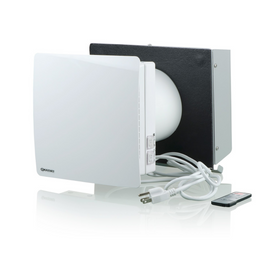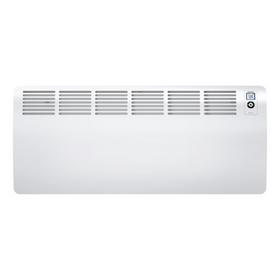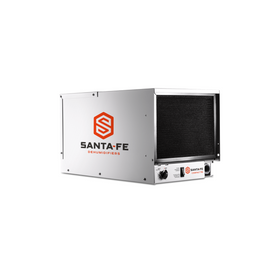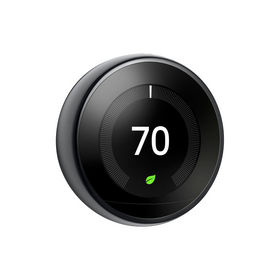
Inexpensive Upgrades for a More Sustainable Home
Last Updated: Mar 3, 2025One of the biggest misconceptions of the sustainable home movement is that it is only accessible to the wealthy. Many people might want to visit their local farmer's market to purchase grass-fed beef, but the price tag is at least four times as expensive as what you find at your grocery store. While people know that organic, locally grown produce is the more healthy dietary option that will also support the local economy, the pricing of many organic foodstuffs is not accessible for most people.
"Going green," however, doesn't have to be a privilege that is only open to people with deep bank accounts. Today, we offer an array of suggestions (in no particular order) to move your home forward on its sustainability journey while not leaving you in debt.
Table of Contents
- The Importance of Reducing Energy Use
- What Are The Cheapest Ways to Improve the Air Sealing in Your Home?
- What is the Cheapest Way to Improve the Insulation in Your Home?
- What Are The Cheapest Ways to Save Energy at Home?
- What is the Cheapest Way to Incorporate Biophilic Design at Home?
- How Can You Reduce Food Waste at Home Affordably?
- How Can You Save Water Affordably at Home?
- How Can You Reduce Resources When Renovating?
- How Can You Reduce Runoff Affordably at Home?
The Importance of Reducing Energy Use
Finding ways to cut back on your energy usage is an essential step towards sustainability in our homes. The problem, unfortunately, is that many people don't know where to start. The average household in the United States consumes almost 900-kilowatt hours per month, leading to the nearly 1 billion metric tons of C02 emissions by the residential sector in 2019.
While making the change to a home powered by 100% renewable energy is a significant upfront investment, there are inexpensive upgrades you can do to increase energy efficiency. These upgrades will be necessary even if you decide to incorporate renewable power generation, like solar panels, in the future. Improvements don't always have to cost much - they can show up as noticeable savings in your monthly utility bills, as well.

What Are The Cheapest Ways to Improve the Air Sealing in Your Home?
The cheapest air sealing home upgrades include:
- Get an energy audit to find the gaps
- Add caulking around windows and doors
- Find and seal air gaps
- Add or reestablish weatherstripping around doors
Get an Energy Audit
You can't save on energy unless you know how you're using it. You can arrange for a professional to do an energy audit of your home's power use. This audit will help you zero in on exactly where the leaks are. Alternatively, many home energy monitoring systems are available too. After paying attention to how your home uses energy for a couple of months, you should have a better idea of where your upgrades can make the most impact.
Do the Weather Stripping
That chilly draft that you feel in your home all winter long is pretty annoying and also leads to substantial heat loss in your home. ENERGY STAR finds that fixing leaks or drafts in your home, usually around doors and window fixtures can save upwards of 35% of the heating or cooling loss that occurs in your home. Weatherstripping doors and windows are pretty inexpensive. A roll of foam tape only costs about $8, while silicone products will run you between $6 and $7 per tube.

What is the Cheapest Way to Improve the Insulation in Your Home?
The least expensive ways to add home insulation include:
- Adding additional insulation to your attic
- Fill gaps in the attic floor
- Insulate your ductwork
- Insulate your pipes
- Install insulating window shades

Insulate Your Attic
Uninsulated parts of your wall won't cause the same amount of heat loss as a patch of your attic that is left uninsulated. Since hot air rises, you will want to make sure that your attic is well insulated. If you want a greener insulation option, you can choose a natural insulation option like sheep's wool or hemp insulation. Or, take recycled options like cellulose or cotton batt insulation.
Fill in Those Gaps in the Attic Floor
While many homeowners religiously weatherstrip around their windows, we often forget that another primary source of drafts in the home is holes in the attic ceiling. Most homes have dozens of holes that have been drilled into the attic floor for running cables, wires, and other necessary household purposes. Ensure to fill in those holes with caulk to keep the cold attic air from filtering into your home in the winter.
Insulate the Ductwork in Your Home
The ductwork that goes through your basement and attic leaks significant amounts of cold or hot air into the crawlspaces where it doesn't belong. Insulating your ductwork is a simple way to save around 20% of the energy used in your home.
Install Insulating Window Shades
If installing new windows is unrealistic, installing insulating window shades on your windows is a great way to protect your home from drafts and heatwaves. This step will give you more control over how windows affect the temperature in your home.

What Are The Cheapest Ways to Save Energy at Home?
Installing energy-efficient light fixtures, purchasing a programmable or smart thermostat, and installing a ceiling fan are some of the easiest transitions to make to a more sustainable and efficient home. Also, consider upgrading to more efficient doors and opting for ENERGY STAR appliances when you're ready for an upgrade!

Efficient Light Fixtures
And it makes both ecological and economic sense. The average American home has around 45 light bulbs throughout the house. LED light bulbs and integrated LED light fixtures will save you approximately $75 per year while also using up to 80% less energy. LED light bulbs start at about $5 a piece.
Programmable and Smart Thermostats
A thermostat is an essential part of any heating and cooling unit. Programmable thermostats are unique in that they offer more control and exactness. If you feel comfortable at 65 degrees, getting that exact temperature in your house can save you a substantial amount of energy and money. Compare this with regular thermostats, which often leave your home warmer or cooler than what you intended. This type of thermostat will run you between $90 and $140, and you'll notice the savings monthly. If you want to splurge on a Smart Thermostat, they will run you about $250 to $350 - but the added features and savings are undoubtedly worth it as well.
Ceiling Fans
Ceiling fans might not seem like a new technology since these adornments have been in homes for decades. However, ceiling fans help maximize airflow through the house and thus limit the amount of work your furnace or air conditioner does daily. Ceiling fans can be found at virtually any home improvement store and should only cost you $80 to $300 - look for an ENERGY STAR-rated Ceiling Fan. If you can't install the fan yourself, you'll most likely need to hire an installation service. These professionals will generally charge you anywhere between $60 and $80 for the installation.

Energy Efficient Doors
Most of the doors in modern-day homes have no insulation, meaning significant heat is lost through these spaces. Today, you can find many steel and wood doors built with a foam insulation core, which will help keep the heat in your home as long as your kids don't forget to shut it. Your choices are wide-ranging - you can opt for an ENERGY STAR certified door or go all the way with a super-insulated Passive House door.

ENERGY STAR Appliances
Purchasing a new refrigerator, washer, and dryer in one go will end up being a sizeable investment for anyone. When it does come time to replace one of your household appliances, however, opting for an ENERGY STAR certified appliance would save you significant amounts of energy. You can expect to save more than $100 per year for each large appliance you replace in your home with an ENERGY STAR-certified model.

What is the Cheapest Way to Incorporate Biophilic Design at Home?
If you have wanted to bring more natural light into your home, consider opening up large windows in the south-facing wall of your home. This passive solar design approach will allow you to cut back on your heating bills by taking advantage of the natural warmth (and light) offered by the sun. Triple pane and passive house windows generally add 10-15% to the cost but will increase efficiency and sound insulation.
How Can You Reduce Food Waste at Home Affordably?
Around our world, there are several regions facing crises related to a lack of space for waste disposal. Poor waste management, especially not separating "wet" organic waste from "dry" plastics and other non-organic waste, is a significant contributor to greenhouse gasses. When mixed in with regular garbage, organic wastes create leachates that release potent methane gasses in the landfills. By simply making your own compost pile for your organic waste, you can cut back on methane emissions, use less space in our landfills, and get a free supply of fertile topsoil for your garden. What's best is that you don't need any money to start a simple compost pile behind your home!

How Can You Save Water Affordably at Home?
There are many low-flow faucets and showerheads available on the market today for both baths and kitchens. Any low-flow device will save you around 50% of the water that your home consumes. You can expect to remake the money you invest in these fixtures quickly. ENERGY STAR states that you can expect savings on your water bill upwards of $60 to $100 per year. An inexpensive low-flow showerhead starts at just $20, while low-flow sink faucets can cost as little as $15.

How Can You Reduce Resources When Renovating?
If you are looking to pull up your old, stained carpet to replace with shiny, new wood floors, consider opting for reclaimed wood flooring. If you're looking to replace your counters, opt for a recycled option.
Reclaimed Flooring
These flooring options won't contribute to deforestation but depend on post-consumer recycled wood while still offering beauty and elegance. The cost of reclaimed wood flooring is usually somewhere between $2 and $5 per square foot. These rates are comparable to the cost of new hardwood flooring options.
Recycled Countertops
Redoing your kitchen almost always means changing out your old (and stained) kitchen countertops for sleek granite slabs. While these countertops will undoubtedly bring some life to your kitchen, the mining industry that produces these granite slabs is responsible for environmental degradation. You can opt for terrazzo, a green countertop option that combines recycled glass and cement and offers a touch of uniqueness that is also sustainable. Recycled paper and recycled glass countertops are beautiful and sustainable options as well!
How Can You Reduce Runoff Affordably at Home?
The water that runs off your roof, through your yard and driveway, and eventually into the storm sewer collects many potentially dangerous contaminants. From vehicle oil spills to nitrates from the fertilizer in your garden bed. To stop this contamination of our water supply, you can easily create a rain garden. You can do this by digging small basins or shallow depressions in your yard and heavily mulching these basins. This process is a great way to allow nature to purify (and utilize) the water that runs through our property. If you have a strong back, it won't cost you anything to dig these basins. Many electrical and wood service companies might even donate the wood chips they make from periodically trimming trees around town.
Tobias Roberts
Tobias runs an agroecology farm and a natural building collective in the mountains of El Salvador. He specializes in earthen construction methods and uses permaculture design methods to integrate structures into the sustainability of the landscape.










